Reviews
How Domenico Gnoli’s Meticulous Paintings Reveal a Society—Like Ours—That Is Coming Apart at the Seams
A new exhibition at Luxembourg & Dayan reveals how the artist used elements of Surrealism and Pop to do something entirely different.
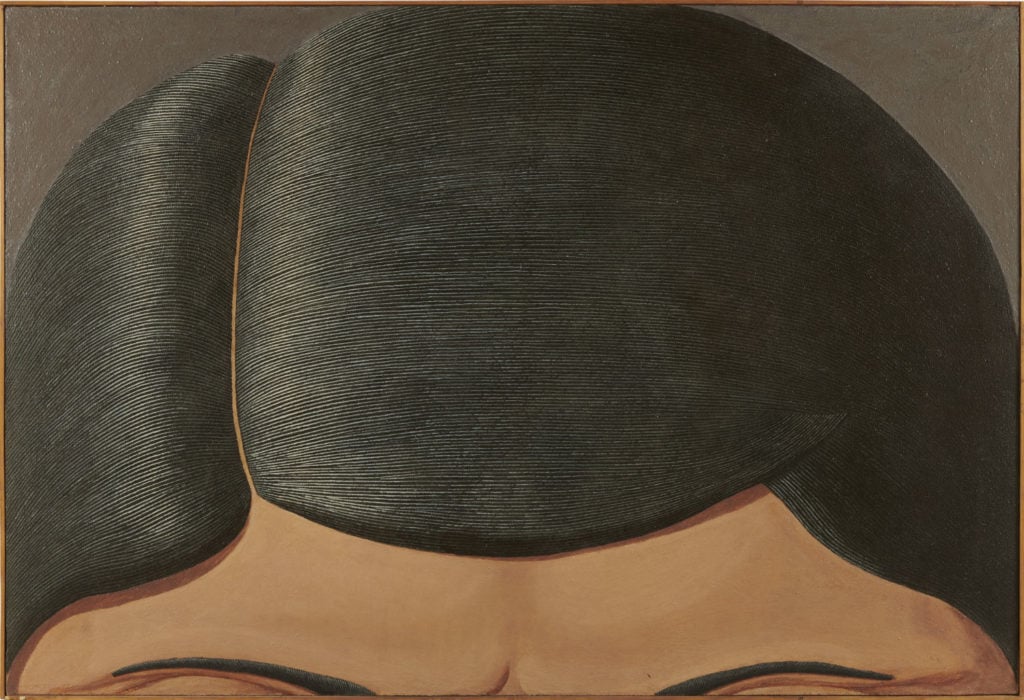
A new exhibition at Luxembourg & Dayan reveals how the artist used elements of Surrealism and Pop to do something entirely different.

Ben Davis

Domenico Gnoli (1933–1970) is a unique and difficult figure to place. He died young, at 36, and lived fast, hanging with a glamorous crowd and marrying twice. He can be (and has been) called a Pop artist or a Surrealist, depending on how you look at his large, elegant, sumptuous canvasses, a suite of which are on view now at Luxembourg & Dayan in New York.
These paintings characteristically zoom in on some crisp fragment of a domestic interior or sartorial flourish: a perfectly made bed, with a serenely patterned spread; a corkscrewing strand of woman’s hair isolated against a quilted fabric; the top of a man’s head, hair meticulously parted; and, my favorite, the knot of a tie seen so close that you can barely tell what it is, appearing at first as just a hovering, enigmatic meeting of two finely striped red force fields.
In their neat vision of an ordered and beautiful world, these paintings align the pleasures of Gnoli’s craftsmanly bravado with the comforts of the sumptuously groomed world they depict, and that he lived in. (The late paintings from 1968 and ’69 were made in the solitude of S’Estaca, a palatial property in Mallorca, later owned by Michael Douglas.) They are totems of stylishly ordered, aspirational luxury, which is what you would expect from an artist who was also a highly celebrated magazine illustrator in the ‘60s.
Except, not quite, right?
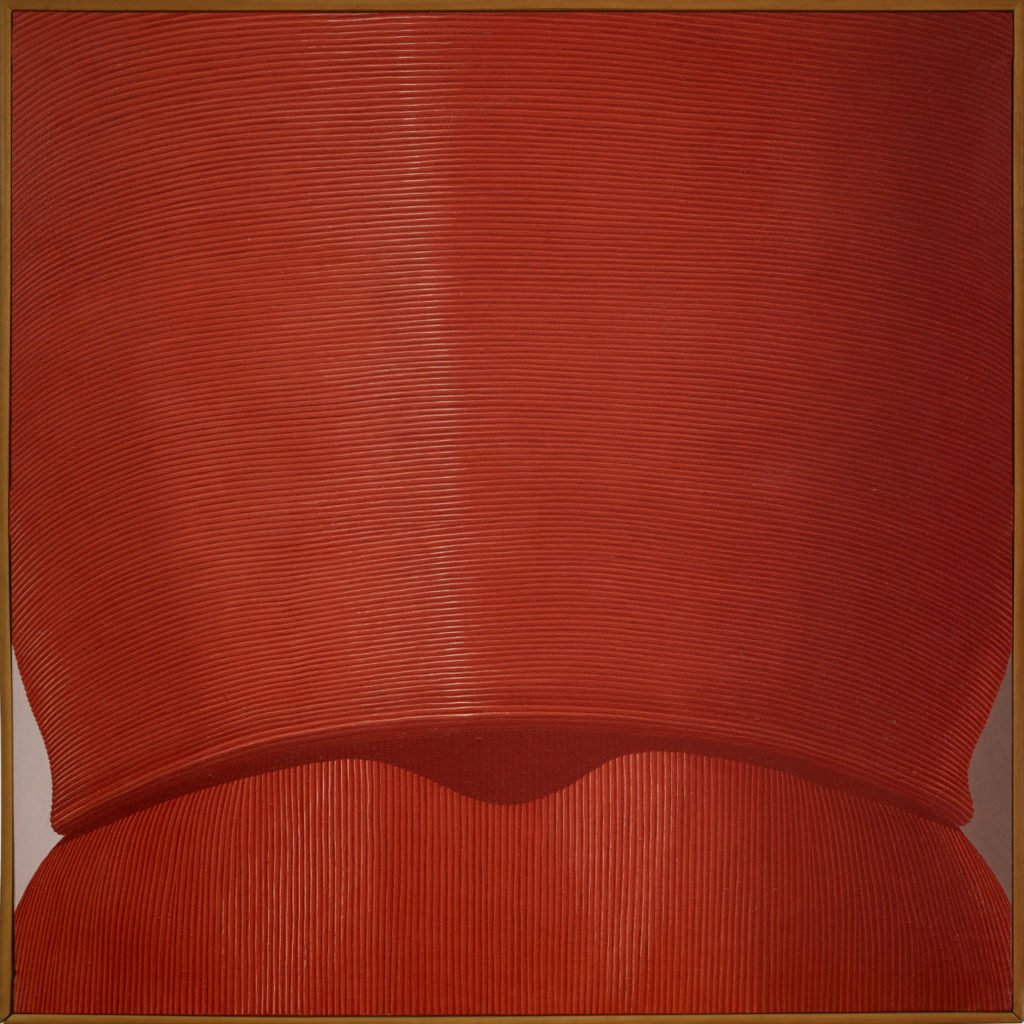
Domenico Gnoli, Red Tie Knot, (1969). © Artists Rights Society (ARS), New York/SIAE Rome. Private Collection. Courtesy Luxembourg & Dayan.
These distended still-lifes are more than essays in dandyish materialism. Above all, the common device of showing things too close or that seem to swell towards you out of the frame makes it all a bit alien. When a human presence is felt it is abstracted, shown through parts rendered as ornaments. This quality, as if the arrayed goods of this world had been obsessed over for so long that their materiality became too present, ceasing to add up to a whole—the sense of a blockage of meaning right where you thought the familiar was—imbues Gnoli’s mature canvasses with notes of doubt.
Writing of the luxuriant Rococo paintings of Jean-Antoine Watteau, the critic John Berger once said that what elevated the artist above his peers was “the ambivalence of the mood of his work.” Watteau, Berger thought, insinuated within his refined fantasies a sense of the transitory character of that top-heavy world of pre-Revolutionary France, which proved prophetic. Their mood of knowing artificiality represented “partly a nostalgia for a past order, partly a premonition of the instability of the present; partly an unknown hope for the future.”

Domenico Gnoli, Il grande letto azzurro (1965). © Artists Rights Society (ARS), New York/SIAE Rome. Private Collection. Courtesy Luxembourg & Dayan.
You might say something similar for Gnoli, who sat at the seam not of aristocracy and democracy, but of the ’50s and the ’60s, the modern and the contemporary worlds.
His exquisite mood makes you think less of contemporaneous Italian art than of film. The lush emptiness makes you think of Fellini’s La Dolce Vita (1960), a tale of the spiritual disorientation of the “Italian Miracle,” of a playboy adrift in a new consumer materialism, or, in a different way, of Visconti’s The Leopard (1963), an exquisite parable of an opulent and dying aristocratic order about to be washed away by the rise of a new Italy (set in a Sicilian palace not so different, in its atmosphere, from the seaside Spanish palace where Gnoli made his studio).
Gnoli’s paintings are neither Pop nor Surrealist, though they have trace elements of both within them. Their realism is clear enough, and traditional, but the too-closeness of Gnoli’s gaze gives one the sense that abstraction is eating reality up from within. They are between orders: The unplaceableness of these paintings feels like a reflection of an ambivalence about the old-world refinement that they depict, as it is seized by the knowledge of its own superfluity, amid the shifting cultural energies of the ’60s. In that way, they feel both of their time and of the time that came after.
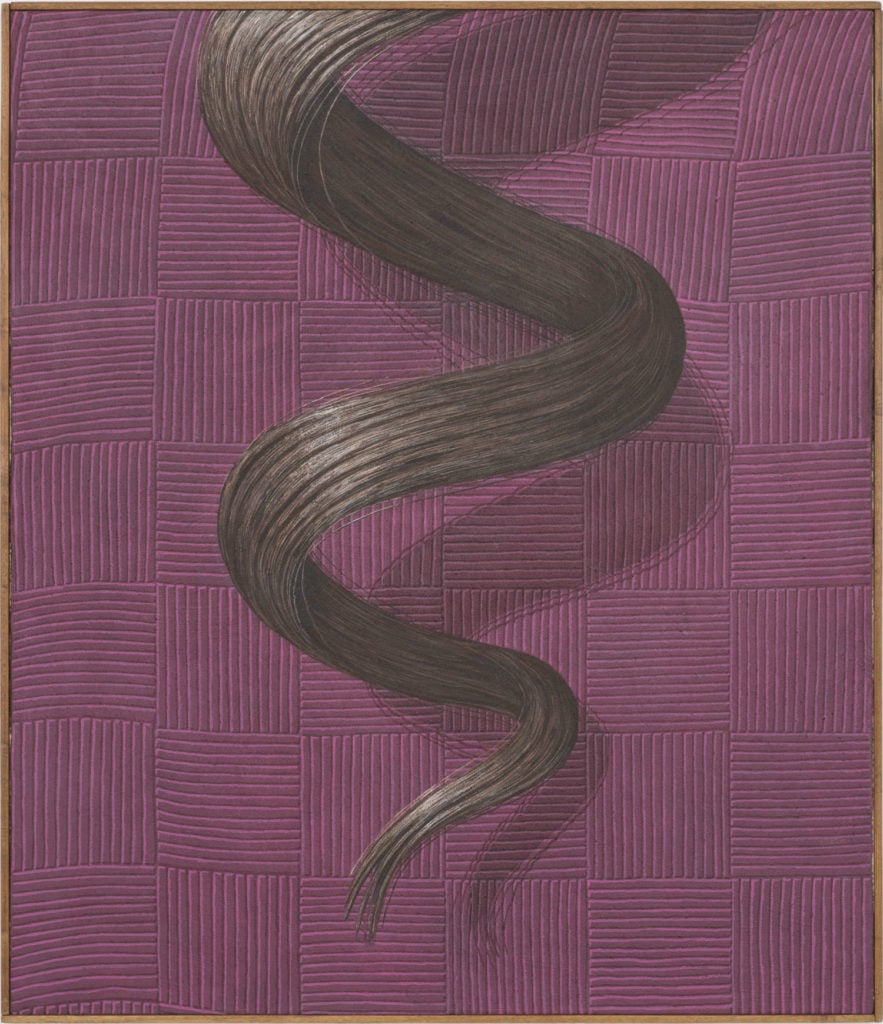
Domenico Gnoli, Curl (1969). © Artists Rights Society (ARS), New York/SIAE Rome. Private Collection. Courtesy Luxembourg & Dayan.
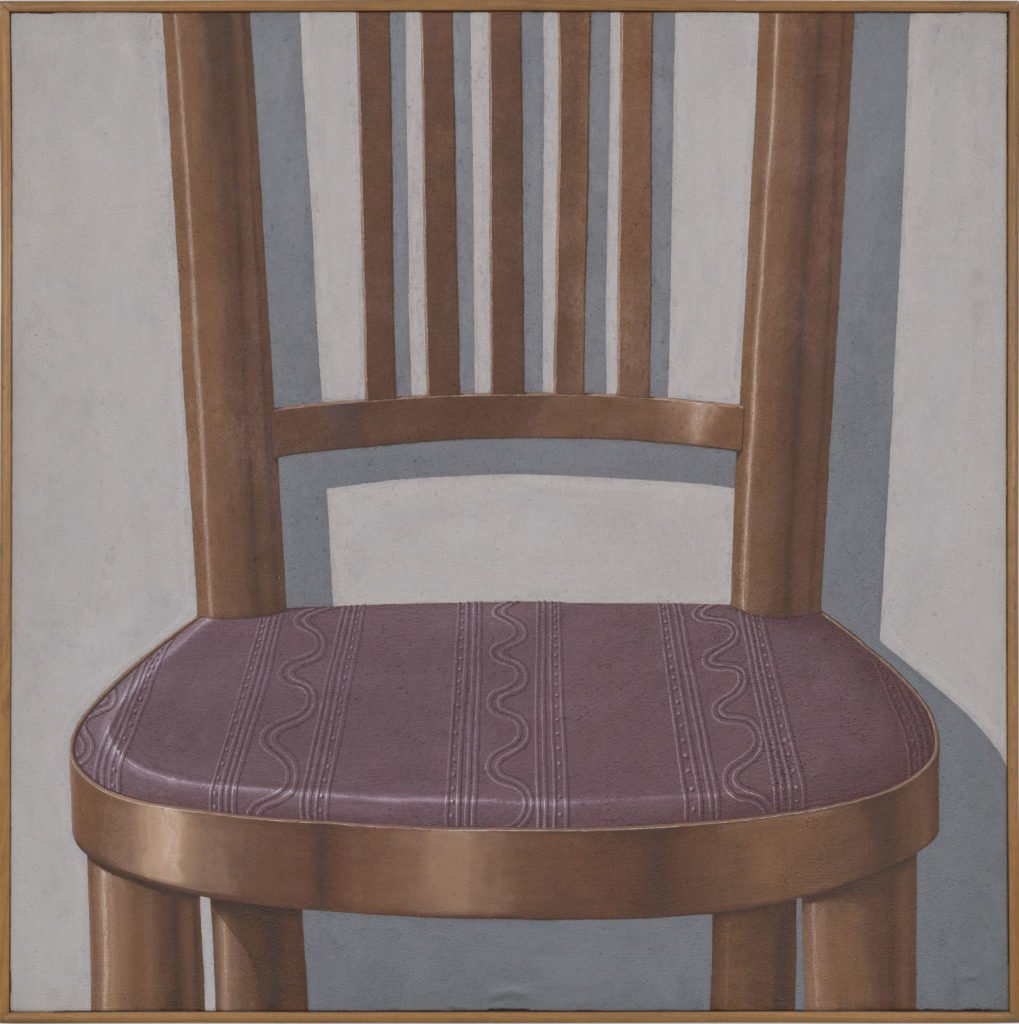
Domenico Gnoli, Chair (1969). © Artists Rights Society (ARS), New York/SIAE Rome. Private Collection. Courtesy Luxembourg & Dayan.
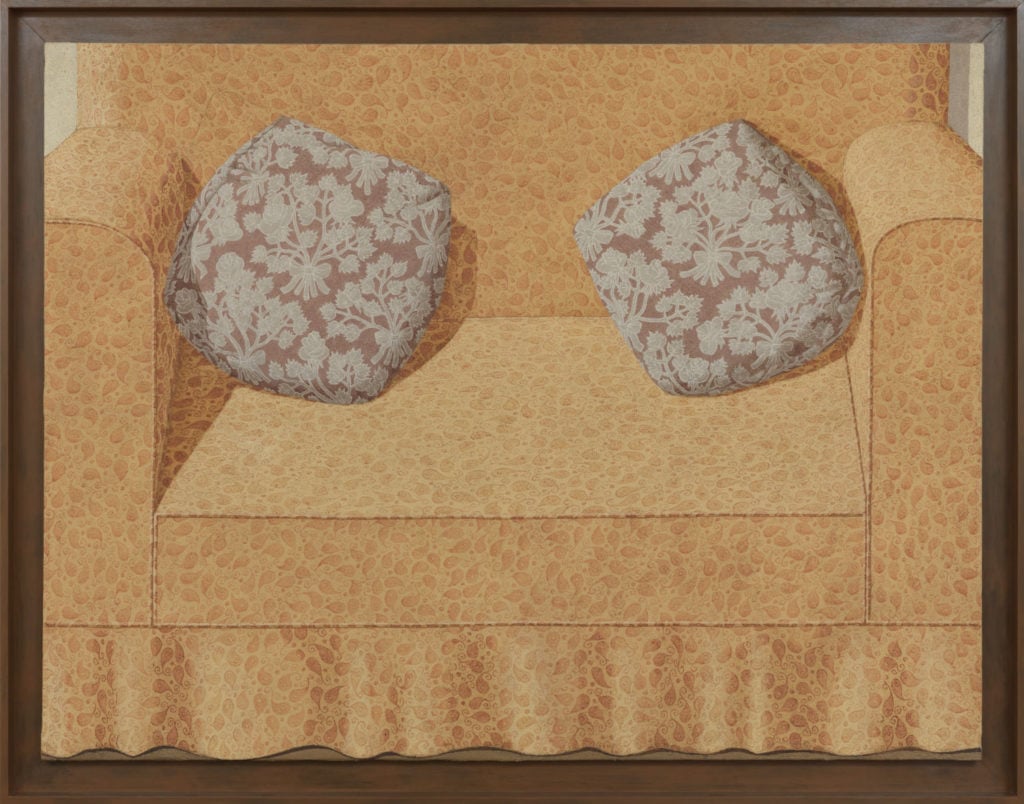
Domenico Gnoli, Sofa (1968). © Artists Rights Society (ARS), New York/SIAE Rome. Private Collection Courtesy Luxembourg & Dayan.
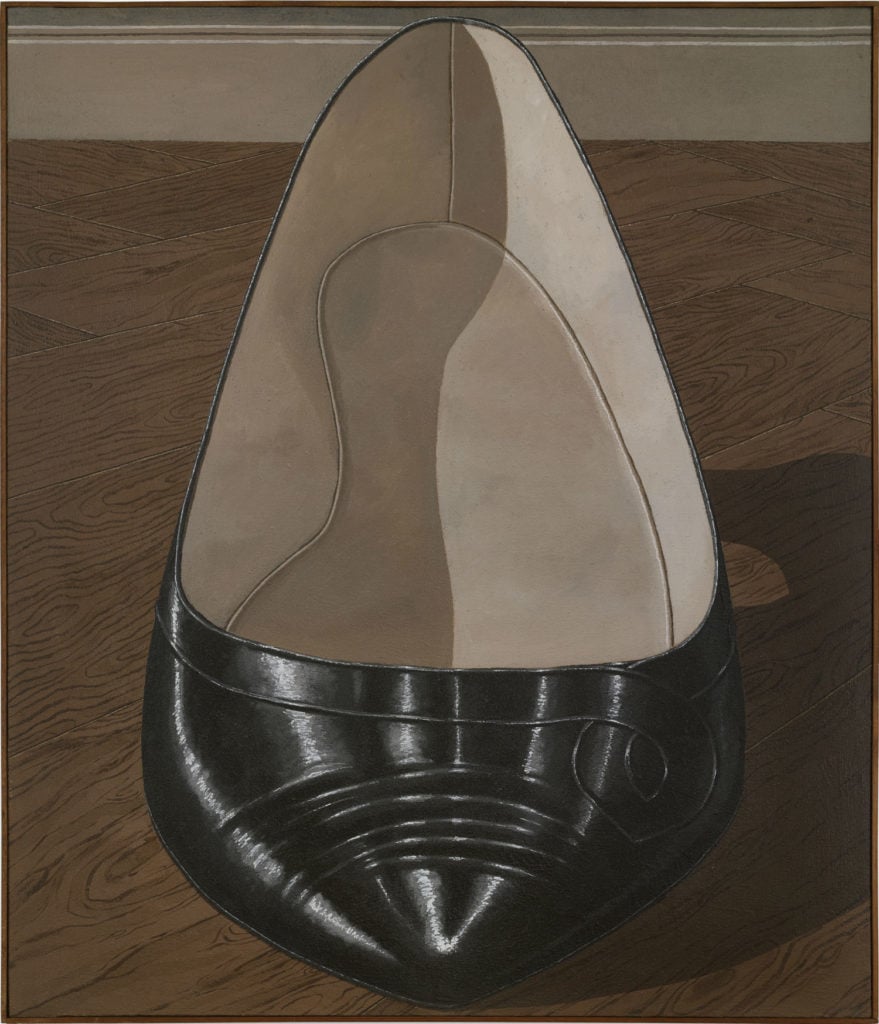
Domenico Gnoli, Scarpa di fronte (1967). © Artists Rights Society (ARS), New York/SIAE Rome. Private Collection. Courtesy Luxembourg & Dayan.
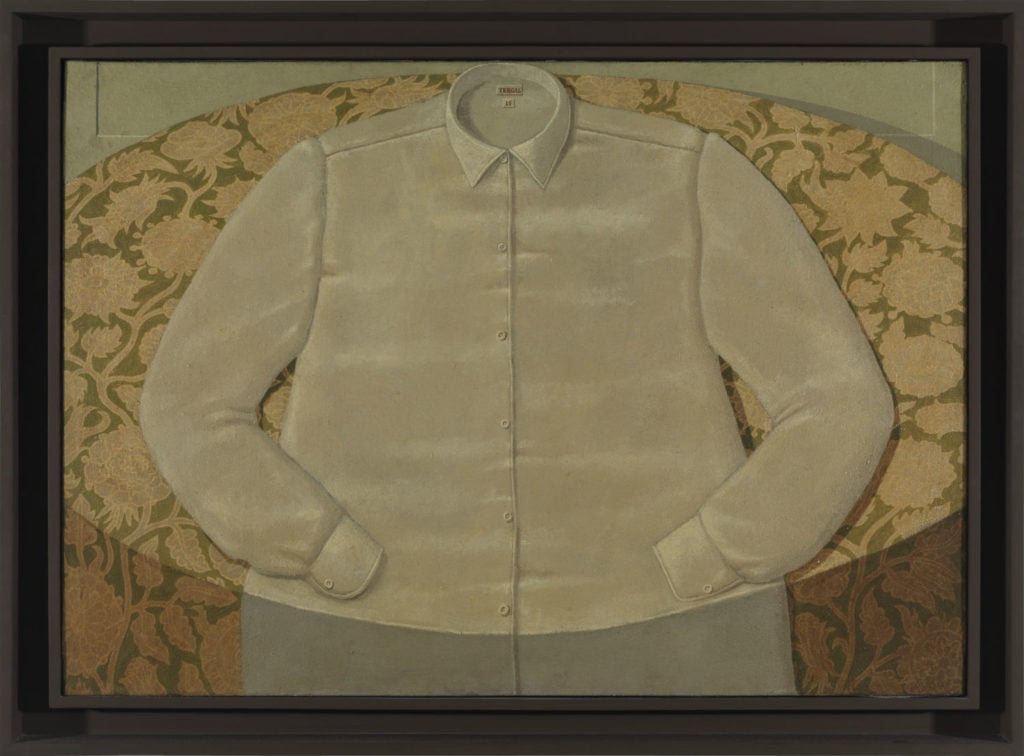
Domenico Gnoli, La chemise sur la table n. 3 (1967). © Artists Rights Society (ARS), New York/SIAE Rome. Private Collection. Courtesy Luxembourg & Dayan.
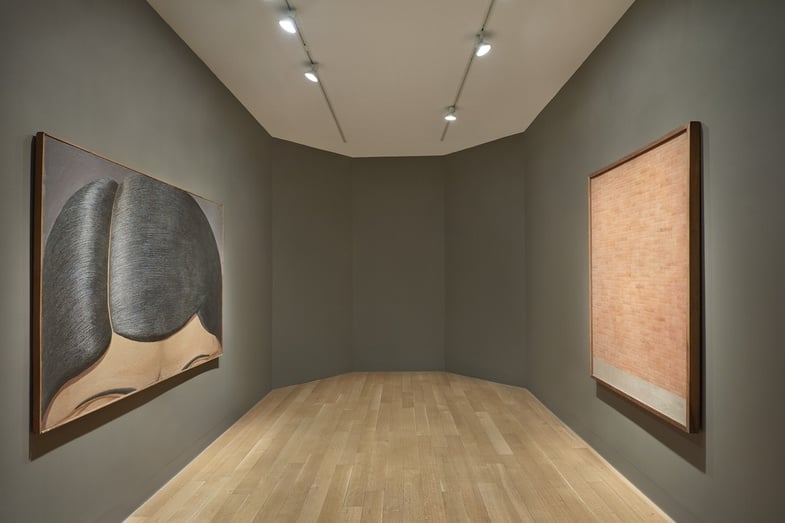
Installation view of “Domenico Gnoli: Detail of a Detail.” Photo by Andy Romer, courtesy Luxembourg & Dayan.
“Domenico Gnoli: Death of a Detail” is on view at Luxembourg & Dayan, through July 14.